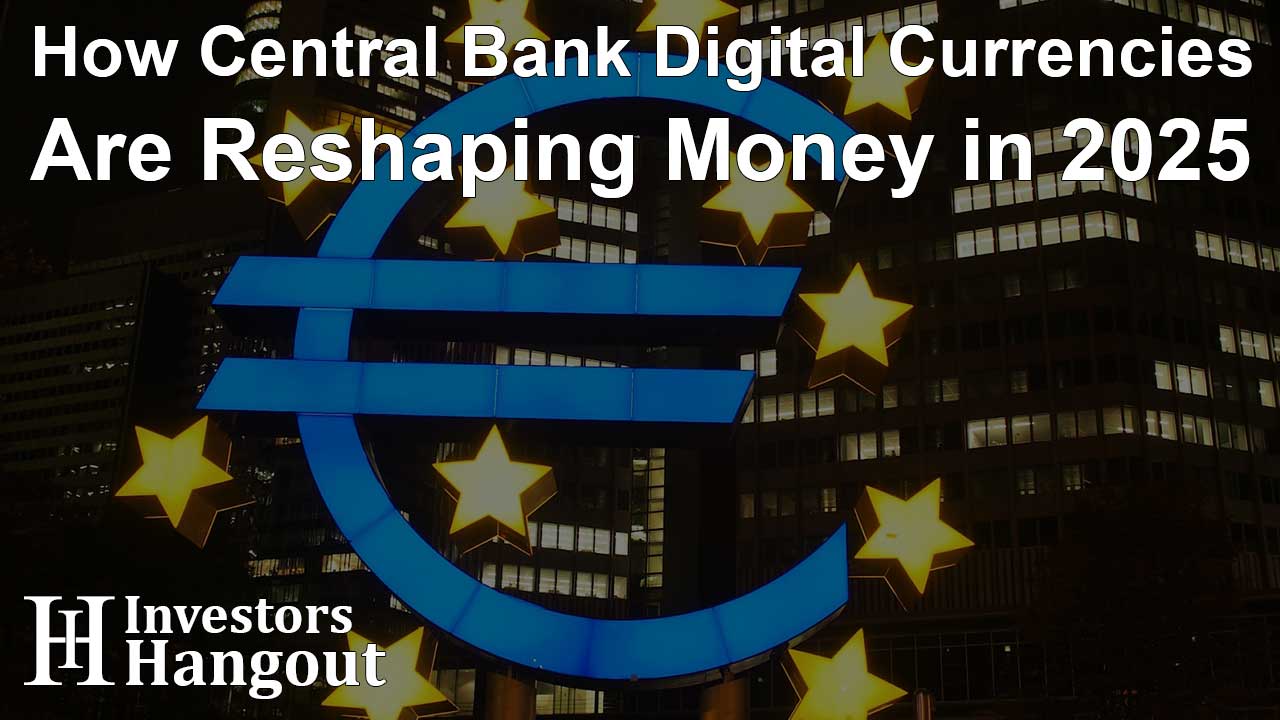How Central Bank Digital Currencies Are Reshaping Money in 2025

Central bank digital currencies (CBDCs) are gaining ground around the world. As digital payments grow and cash use declines, central banks are moving to offer their own digital money. CBDCs are not like private cryptocurrencies. They are government-backed, designed to improve access, speed, and security in the financial system.
The rise of CBDCs is a response to changing habits. People want faster payments, fewer fees, and more control. Governments also want to protect the role of public money. CBDCs help them do that, while learning from what crypto has already made possible.
Improving Access and Payments
CBDCs are helping more people use financial services. In countries like Nigeria and the Bahamas, digital currencies allow people to send and receive money using phones. These tools work even in areas with limited banking access. Governments can also send aid or public funds directly through CBDC systems.
In developed countries, CBDCs can improve how payments work. Digital money reduces the need for middlemen and brings down transaction costs. Payments settle faster. The system is more transparent. These benefits help both consumers and governments.
Crypto’s Influence
CBDCs borrow ideas from crypto but stay under government control. Cryptocurrencies like Bitcoin showed that people value fast, global money. Stablecoins added price stability, and presale crypto coins have proven how hopeful the global community is. Presales allow investors to buy new coins before they hit the exchange sites, presenting a potentially lucrative opportunity.
CBDCs take the best parts – speed, digital access, and programmable money – and connect them with legal frameworks. That makes them easier to regulate and more secure for public use.
Unlike crypto, CBDCs do not depend on market demand. They are issued by central banks. This gives them legal clarity and trust. CBDCs aim to work alongside private assets, not replace them.
Policy and Monetary Tools
CBDCs could change how central banks guide the economy. Right now, central banks influence interest rates through commercial banks. With CBDCs, they can connect to people and businesses more directly.
This may make it easier to pass policy changes through the economy. CBDCs also allow new tools. For example, some designs might support negative interest rates or fast distribution of stimulus funds.
But risks exist. If people move large amounts of money out of traditional banks into CBDCs, it could hurt bank funding. To avoid this, central banks are testing ways to limit balances or offer lower returns on digital holdings.
Cross-Border Innovation
CBDCs are also changing how countries move money across borders. Projects like mBridge in Asia are testing cross-border platforms between central banks. These systems make international transfers faster and cheaper.
In Europe, banks are experimenting with CBDCs for interbank settlement. These pilots cut costs and bring real-time tracking. Many countries are now sharing research to improve how their systems can work together.
Privacy and Security
CBDCs raise questions about privacy. People want to know who controls their data. Some countries use strong ID checks with clear data rules. Others explore models that allow small transactions to be anonymous.
Security is critical. CBDC systems must defend against fraud and cyberattacks. Central banks are working with tech experts to build safe platforms. Some use tools like zero-knowledge proofs to protect user identities while meeting legal requirements.
Public trust depends on how these issues are handled. Many central banks are publishing privacy policies and asking for public input. They aim to show that digital money can be safe, fair, and transparent.
Adoption and Public Use
For CBDCs to work, people and businesses must be willing to use them. Some early pilots faced low adoption. Often, users need clear benefits, not just new technology.
Merchants must be able to accept CBDCs easily. Payment apps and systems need updates. Education also matters. People want to understand how digital cash works and why it’s useful. Governments are starting to run campaigns to explain these points.
Some pilots offer discounts or small incentives to encourage use. Others work with private companies to build helpful tools. These early lessons show that adoption takes time and trust.
A Strategic Shift
CBDCs also carry geopolitical weight. Countries want to reduce dependence on foreign payment systems. They aim to build their own digital infrastructure. This protects national control over payments and supports local industries.
China’s fast rollout of the digital yuan has pushed other countries to move faster. The European Union, India, and the US are all exploring their own models. CBDCs are becoming part of long-term economic strategies.
But global standards are still missing. Without them, systems may remain fragmented. More cooperation will be needed to build a network that works across borders.
Looking Forward
CBDCs are not just about payments. They represent a shift in how money is created, moved, and managed. They offer governments more flexibility and give people new options. While they will not replace cash or crypto entirely, they will likely become a third option in the financial mix.
As more countries launch or expand pilots, CBDCs are moving from concept to reality. The focus now is on usability, privacy, and public trust. With the right design, CBDCs can support a future where money is faster, safer, and more accessible.
About The Author
Contact Ryan Hughes privately here. Or send an email with ATTN: Ryan Hughes as the subject to contact@investorshangout.com.
About Investors Hangout
Investors Hangout is a leading online stock forum for financial discussion and learning, offering a wide range of free tools and resources. It draws in traders of all levels, who exchange market knowledge, investigate trading tactics, and keep an eye on industry developments in real time. Featuring financial articles, stock message boards, quotes, charts, company profiles, and live news updates. Through cooperative learning and a wealth of informational resources, it helps users from novices creating their first portfolios to experts honing their techniques. Join Investors Hangout today: https://investorshangout.com/
